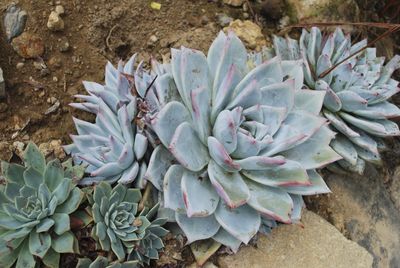What are Dudleya Plants?
Dudleya succulents are a small genus; some look similar to the echeveria. The group includes 40 to 50 different types, with most native to Western U.S. states and Mexico. Some grow on the islands in those areas and possibly into S. America. Attractive, robust and long-lived, the Dudleya succulents often have a small, charming rosette. These occur on branches as they mature. This plant grows in a variety of shapes and has a range of habits. It may be branched or unbranched, and does not grow from its leaves. It can only propagate from seed, cuttings, or division, so not all Dudleya cultivars are available. “LiveForever” or giant chalk are common names for the plant.
How to Care for Dudleya
“LiveForever” is the epitome of low-maintenance; it literally thrives on neglect. While all succulents benefit somewhat from neglect, it appears to extend the life of this plant. In the wild, Dudleya lives to be 50 to 100 years old. Hard as it may be, get your plant settled into the right spot and forget about it. These soft succulents appreciate a bright light or sunny spot when growing near the coast and afternoon shade when grown inland. Dudleya plant info says they like a cool location but cannot tolerate frost. Too little light quickly results in soft leaves and stretching. There are reports from the Royal Botanic Garden in Kew of them tolerating cold, wet conditions. Some of them grow under glass there. If you think you have a Dudleya succulent, give it a try outside if you wish. It is most likely to survive with temperatures above the low 40s F. (4 C.), and as with other succulents, Dudleya succulent care should include planting in a fast-draining, gritty planting medium. Dudleya succulents have a white coating of epicuticular wax or farina, inherent for their protection. Consider it a type of sunscreen. Avoid touching the leaves and disturbing this coating. It sometimes allows water to roll off the leaf, but don’t chance it. It is best to water at the roots with all succulent plants. Many cannot tolerate getting their leaves wet. Speaking of water, “LiveForever” needs little water and should have an extended dry period between waterings. Sources advise withholding water in summer. Because this plant is accustomed to dry conditions in its native habitat, it is recommended to stop watering Dudleya succulents in summer. The exception would be for plants growing in a sandy soil, which might survive limited summer rainfall. When you begin watering again in fall, do it at the base of the plant, avoiding contact with the leaves. Dudleya succulent care starts with planting in a fast draining soil mix, such as cactus and succulent soil. Sometimes attacked by insect pests, treat as you see them. These may include:
Aphids Mealybugs Gnats Slugs and snails
Keep an eye out for these and treat quickly when spotted. Provide good air circulation and avoid overwatering to help keep them at bay.
